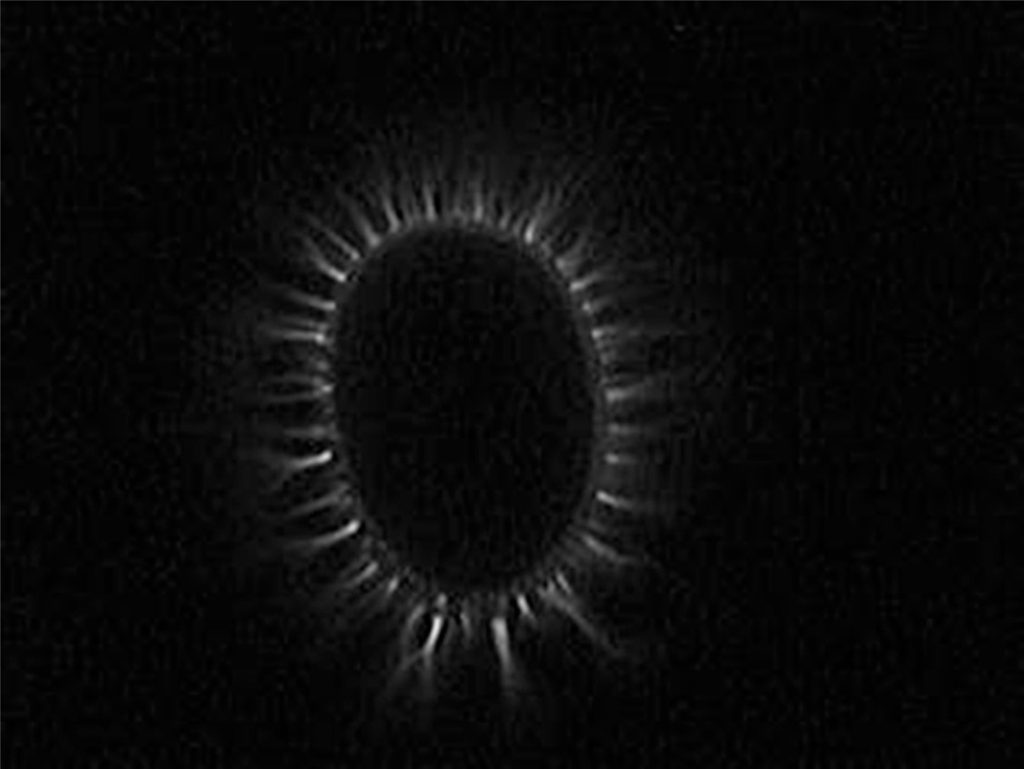Evaluating the use of gas discharge visualization to measure massage therapy outcomes
Jolie Haun,* Nitin Patel, Gary Schwartz, and Cheryl Ritenbaugh
Jolie Haun, HSR&D Center of Innovation on Disability and Rehabilitation Research, James A. Haley VA Medical Center, Tampa, FL, USA; Department of Community and Family Health, College of Public Health, University of South Florida, Tampa, FL, USA
Abstract
Background
The purpose of this study was to evaluate the short-term effects of massage therapy using gas discharge visualization (GDV), a computerized biophysical electrophoton capture (EPC), in tandem with traditional self-report measures to evaluate the use of GDV measurement to assess the bioenergetic whole-person effects of massage therapy.
Methods
This study used a single treatment group, pre–post-repeated measures design with a sample of 23 healthy adults. This study utilized a single 50-min full-body relaxation massage with participants. GDV measurement method, an EPC, and traditional paper-based measures evaluating pain, stress, muscle tension, and well-being were used to assess intervention outcomes.
Results
Significant differences were found between pre- and post-measures of well-being, pain, stress, muscle tension, and GDV parameters. Pearson correlations indicate the GDV measure is correlated with pain and stress, variables that impact the whole person.
Conclusions
This study demonstrates that GDV parameters may be used to indicate significant bioenergetic change from pre- to post-massage. Findings warrant further investigation with a larger diverse sample size and control group to further explore GDV as a measure of whole-person bioenergetic effects associated with massage.
Keywords: complementary therapies, massage, outcome measures, gdv camera, GDV/EPI
Introduction
Massage therapy has gained recognition for having therapeutic effects for individuals, including those with a diverse range of conditions. Throughout the field of massage, practitioners commonly recognize a change that occurs in the person after receiving a massage treatment; often referred to as an “energetic” change. Therapists and clients commonly refer to this therapeutic effect of massage, yet research has yet to capture the essence of this change using traditional outcome measures. There is growing evidence to suggest massage has significant effects on outcomes in diverse populations.
The majority of literature on massage therapy focuses on associated outcomes supporting pain and tension reduction [1–11], stress and anxiety reduction [1, 3, 4, 8, 12–15], alleviating depressive symptoms [1, 2, 12, 16, 17], and general well-being/quality of life [3, 4, 10, 14, 18]. Fewer studies have evaluated additional outcomes including immune function [19, 20], blood flow [10], nausea management [3], and quality of sleep [6, 13, 21]. Subjective self-reports are most commonly reported to demonstrate massage outcomes for symptoms related to perceptions of pain, tension, stress, anxiety, and well-being [1, 3–5, 16, 20, 22]. To support the validity of findings, previous research has relied on objective biomarkers to demonstrate effects of massage. Psychological outcome measures have been used to demonstrate changes in cortisol [12, 13, 16, 17, 22], norepinephrine [13], and serotonin levels [16]. Physiological objective measures have focused on impacts on electrocardiogram (EKG) [23] and electroencephalogram (EEG) patterns [15], respiratory rate [4, 22], pulmonary function [22], blood glucose [24], serum insulin and IGF-1 levels [24, 25], natural killer cells [19, 20], white blood cells [26], and neutrophil counts [26]. The reports of these outcome measures provide an indication of the mechanisms of therapeutic massage on individual biosystems (e.g., cardiovascular, immune, etc.); however, little research has adequately demonstrated the whole-person bioenergetic effects (i.e. the person as a whole-complex system) of massage therapy that is commonly seen in practice.
This research was designed to evaluate the bioenergetic effects of massage therapy in a healthy population using the gas discharge visualization (GDV) device, an electrophoton capture (EPC) measure that theoretically measures the biophoton emissions surrounding the finger tips, as an indication of one’s energetic field [27–29].
The GDV device provides a potential computerized biophysical screening of the psychophysiologic state of an individual [29]. The GDV uses modern optics, electronics, and computer processing for analyzing photon emission stimulated by a pulsed electromagnetic field [29]. Theoretically, GDV imaging and analysis process measures quantify the biophoton emissions surrounding the finger tips [29], such that energy photons are emitted from the corona discharge formed as a result of the ionization of air molecules surrounding the fingertip (see Figure 1). Theoretically, it is these energy photons which cause the resultant image, and as such represent the individual’s bioenergetic field.

Full text Gas Discharge Visualization to measure massage therapy:
https://www.ncbi.nlm.nih.gov/pmc/articles/PMC5323251/
Gas Discharge Visualization to measure massage therapy
